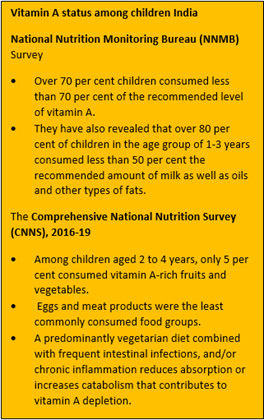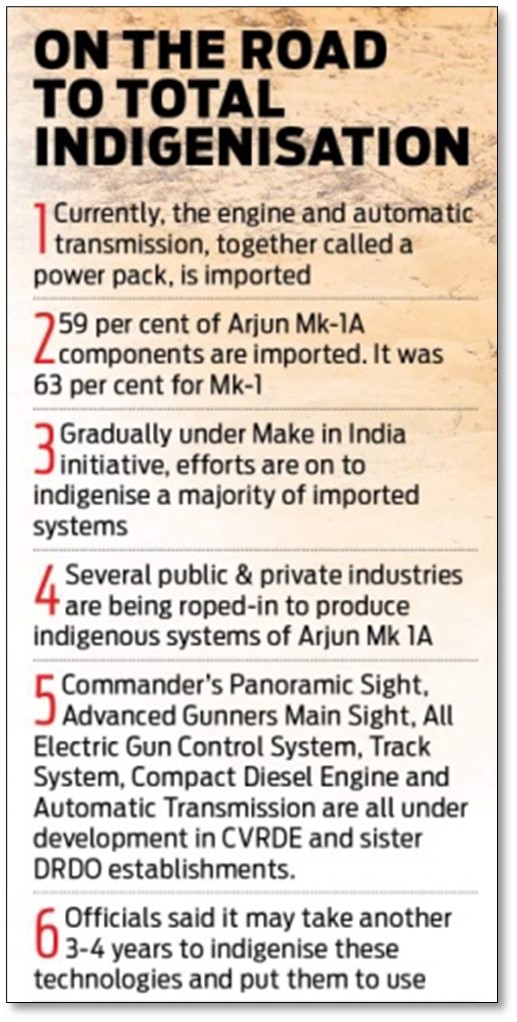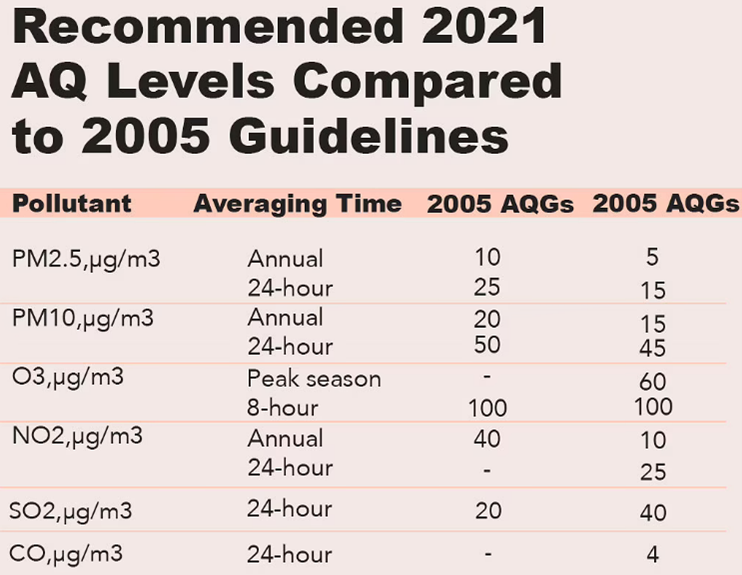Wednesday, 29th September 2021
Crude Oil crunch
In News
Brent oil, international crude benchmark, prices have been soaring, as much as above $80 for first time in 3 years.
About the news
- About: Crude oil prices have rallied in the backdrop of hurricane Ida impacting US Gulf Coast production and a fall in US inventories.
- European natural gas, carbon permits and power rose to fresh records recently, with little sign of the rally slowing.
- China’s factories and households are grappling with power cuts as Beijing is trying to at meet its energy use targets.
- Experts are predicting the prices to hit $90-100 this winter.
- Reasons: The latest increase has been predicted by bankers and traders due to increase in energy demand in the upcoming winter and speculation that the industry isn’t investing enough to maintain supplies.
- Economists and an environmental group say manufacturers used up this year’s quota faster than planned as export demand rebounded from the coronavirus pandemic.
- The rebound in oil prices from last year collapse is due to record output curbs from the OPEC+ group and a global economic recovery that has boosted demand.
- Effect: The jump to $80 is adding inflationary pressure to the global economy at a time when prices of energy commodities are soaring.

What has been the impact on India?
- On Taxes: A further surge could put pressure to cut taxes, which may impact revenues and spending. Diesel and petrol prices in India have already breached the ₹100 mark and are at a record high. Domestic diesel demand is expected to reach pre-covid-19 levels by Diwali.
- Oil prices have witnessed sharp volatility in the past and government has raised taxes on petrol and diesel steeply. As the global oil prices have now recovered and unless taxes are cut, any rise in oil prices will further pinch consumers. The price was $76.89 a barrel on 27 September.
- Immediate Actions: The recent surge in crude oil prices prompted both the Reserve Bank of India (RBI) and federal think tank NITI Aayog to flag the need for the Centre and states to contain input cost pressures on businesses.
- Price Optimization measures: India has been calling for a global consensus on “responsible pricing" as it plans to grow its refining capacity to 400 mtpa by 2025.
- India is looking at private investment to raise domestic oil and gas production, which has stagnated for the last few years.
Sources:
India Inc. lags presence of women board members: Report
In News
According to a report by the Credit Suisse Research Institute, Corporate India lags w.r.t the presence of women on their boards.
About the News
- According to the Report, Female representation on boards of large Indian companies has increased from 11.4% in 2015 to 17.3 per cent in 2021. (Significantly below the global average of 24%)

- Five out of the top 10 markets with the highest percentage of women in management are from Asia-Pacific -- Vietnam (34 per cent), the Philippines (31 per cent), Thailand (29 per cent). In contrast, India (10 per cent), South Korea (8 per cent) and Japan (7 per cent) continue to occupy the bottom three positions.
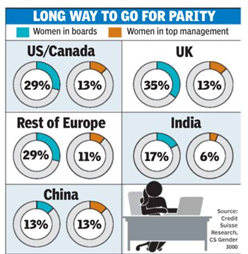
- Europe and North America have the largest share of women in management roles but the divide between these regions and the rest of the world is far less than at the board level with the gap at the management level is just 1 percentage point.
- The rising gender representation at the boardroom levels also illustrates the positive correlation between increased gender diversity in leadership positions and superior returns on capital, environmental, social and governance (ESG) and even the performance of the stocks.
- Companies with more women on their boards have invariably been giving more returns to shareholders and also are more profitable.
Regulations in India for increasing women representation
- All public companies which are listed on stock exchanges and companies with either a paid-up capital of Rs 100 crore or annual turnover over Rs 300 crore are required to have at least one woman board member under the Companies Act.
- The Securities and Exchange Board of India (Sebi) further requires, since April 1, 2020, that the top 1000 listed companies by market capitalisation have a woman board member who is also an independent director.
Sources:
Crop Varieties with special Traits
In News
Indian Council of Agricultural Research (ICAR) has developed crop varieties with special traits such as climate resilience and higher nutrient content to address the twin challenges of climate change and malnutrition.
About the News
- Thirty-five such crop varieties with special traits like climate resilience and higher nutrient content have been developed in the year 2021 The crops included a drought tolerant variety of chickpea, disease resistant varieties of rice and biofortified varieties of wheat, pearl millet, etc.
- The Indian Agricultural Research Institute (IARI) has developed the country’s first-ever non-GM (genetically modified) herbicide-tolerant rice varieties that can be directly seeded and significantly save water and labour compared to conventional transplanting
- Water is a natural herbicide that takes care of weeds in the paddy crop’s early-growth period. The new varieties simply replace water with Imazethapyr and there’s no need for nursery, puddling, transplanting and flooding of fields. You can sow paddy directly, just like wheat,
- This is herbicide-tolerance through mutation breeding, not GM. There isn’t any foreign gene here.
Significance of Climate Resilient and Nutrient Rich Crops
- Reduces Abiotic Stress: Climate-resilient crops and crop varieties are adopted to cope with abiotic stresses such as drought, heat, flooding, salinity and shorter growing season
- Increases Productivity and Farmers’ Income: Climate Smart Agriculture helps in enhancing productivity and doubling the farmers’ income.
- Reduces Malnutrition: Nutritionally Enhanced Food Crops can have a significant impact on the prevailing levels of malnutrition especially in children.
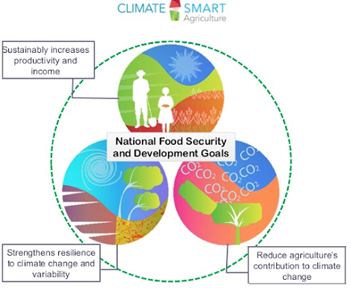
Sources:
- PM to dedicate to the Nation 35 crop varieties with special traits on 28th September
- India gets first herbicide-tolerant & non-GM rice varieties; launch today
- Nutritionally Enhanced Food Crops; Progress and Perspectives
Image Sources:
Land Monetization
In News
The government has decided to set up the National Land Monetisation Corporation (NLMC), a SPV, to fast track monetisation of land and non-core assets of central public-sector enterprises (CPSEs).
About the News
- The NLMC is being set up under the Department of Public Enterprises (DPE) and will be a 100% government-owned company with an initial.
- The Finance Minister had proposed a special purpose vehicle (SPV) for this in her Budget 2021-2022 speech. It had also been envisaged in the National Infrastructure Pipeline.
- The government has made asset monetisation (National Monetization Pipeline) as one of its key agendas for generating revenue, value creation and reducing debt of public sector units.
- Enabling environment has also been created for the land SPV by possibly exempting stamp duty on transfer of immovable property by one government-owned company to another
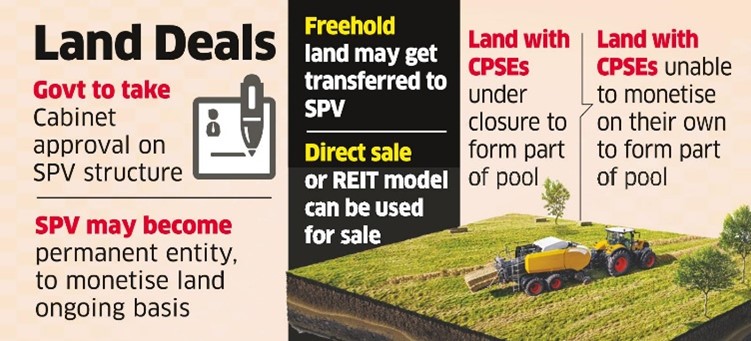
What is Land Monetization?
- Land Monetization is part of the large Asset monetization process under the National Monetization Pipeline. The aim of land monetization process is to capture the real estate value of public land lying idle in money terms so that it improves/ strengthens the finance of urban local government/ authority and other governments.
- Land is a significant tangible asset and its monetization would be the most feasible option to generate revenue. The 13th Finance Commission had also laid down the importance of proper use of land held by states, the Centre and CPSEs/PSU.
- Monetising of land can either be by way of direct sale or concession or by similar means
What will be the purpose of the SPV?
- About the SPV: The National Land Monetisation Corporation will soon be set up under the Companies Act and be 100 per cent owned by the government. The entity will be able to rent, lease and develop assets to monetise them for a fee.
- While several models for creating the special purpose vehicle have been considered, including the Canada Land Company's model, the government has zeroed in on NBCC as it may be better suited to India.
- Types of Assets: Land assets of central public sector enterprises (CPSEs) under closure and non-core land assets of CPSEs under strategic divestment would be pooled and then monetised by the company.
- Powers: The new SPV for monetising assets of public sector enterprises may also get powers to acquire and develop land and other assets on a case-to-case basis, besides renting and leasing them out.
- The SPV would be entrusted with hiring experts, and will devise a process to monetise government buildings, land of public sector undertakings (PSUs) and government departments.
- Fee structure: If the titles of the land are transferred to the company then it would be able to earn from the sales, however if the titles remain with the CPSEs or ministries, a fee would be charged for the sale or development process.
What are some important considerations in the Land Monetization Process?
- Identification: Identification of surplus lands with government departments or CPSEs is the start of the process.
- “Surplus” land or property can be defined as property that is not needed, or not appropriate, for provision of the public service for which the agency owning the property is responsible.
- Business model: All stakeholders, public and private, should receive fair compensation for the land that they make available, as an incentive to participate in the process.
- Document related to the Land: For a successful monetization process, it is essential for the authority to ensure that they have all the required land documents to complete the legal due diligence process. Additionally, a detailed techno-commercial evalution along with valuation of the land should be undertaken.
- As part of this exercise, a detailed analysis of the asset, current and future potential of land, understanding the prevailing policies of the government is imperative.
- Land valuation: Valuation of the land parcel plays an integral role in decision-making process, and hence, should be arrived at subsequent to a thorough analysis of the prevailing market rates and the inherent revenue generating potential of the proposed project.
- Transparency: Transparency in the process is of utmost importance and has to be maintained throughout the monetization process. The details of the land to be monetized should be in the public domain, so that all stakeholders would have a complete understanding of the purpose, intended use, cost of development and estimated timelines of the proposed project.
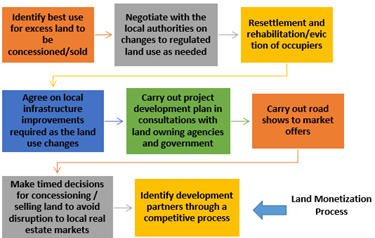
Benefits of Land Monetization
- Source of Finance: Land holdings are one of the government’s most significant tangible assets, whether owned by central ministries, state governments, public sector undertakings or local bodies. Monetizing these land assets, on one hand, can be a significant source of finance.
- Utilization of Excess Land: There is huge amount of under-utilized prime lands of Public Sector Undertakings, Port Trusts, Airports, Railways, municipal corporations etc. The monetisation will capture the real estate value of public land lying idle in monetary terms as to improve or strengthen the finances of government bodies and local authorities.
- Infrastructure Upgradation: Monetisation of land is one of the most viable options for government or local bodies for generating the much-needed funds for upgradation or development of required infrastructure without burdening the state or the Central government
- Optimization of Real Estate prices: Availability of land in otherwise land locked regions provides the much needed relief to occupiers/ end users in the form of controlling the real estate prices.
- The commercial development of land accelerates the real estate prospects in the vicinity and fuels the demand for social infrastructure such as retail development, banking, etc.
- Planned Urbanisation: It also contributes to planned urbanisation, boosts tourism and generates employment. It has cascading effects on economic development and the quality of life of citizens.
Challenges to Land Monetization
- The major hurdle is the time-consuming process of approvals from the various civic authorities.
- The confidence-building measures for the revival of the economy postCovid-19 need to be supplemented by fast-tracking the approval processes
Conclusion: An effective asset-management approach draws information from across the country and connects the dots for value maximization. We need to bring together people and skills to solve our infrastructure problems. The government should do its best to attract the private sector’s interest in what property it has to offer. While we need to design our own model for land monetization, we should learn from the World Bank’s suggestions and the Canadian model to ensure the success of this ambitious programme.
Question: What is land monetization and its benefits? How is the Indian government planning to carry out this process?
Sources:
- Monetisation Push: Govt to set up National Land Monetisation Corporation soon
- New govt SPV likely to get powers to acquire and develop PSU land
- SPV to monetise PSU land in last lap
- Let Canada’s model of land monetization inspire ours
- Monetization of land owned by government bodies – Future and implications
- Report of the Task Force National Infrastructure Pipeline (NIP)
- Land monetisation: The land of opportunity
This Day in History - Matangini Hazra
On September 29, 1942, Matangini Hazra was shot dead by the British Indian police in front of the Tamluk Police Station. She was Gandhian, who participated in Civil Disobedience Movement, Non Cooperation Movement. At the age of 72, she led the group of revolutionary women during Quit India Movement. Hazra became so inspired by Gandhi’s beliefs that she became a devoted follower of the leader, earning herself the name, “Gandhi buri”. In 1977, the first statue in the Kolkata Maidan dedicated to a woman revolutionary was that of Matangini Hazra. In 2002, India Post issued a series of commemorative stamps on the 60th anniversary of the Quit India Movement, a Rs 5 stamp featuring Matangini Hazra’s portrait.

Source:
Image of the Day - Haboob
This is image of a massive dust storm engulfed several areas in Brazil. Visibility was low and forced merchants to shut their shops and doors. According to meteorologists, the phenomenon is common in Asian countries, where it is known as "haboob". It is caused by storms of rain with strong winds that, when they come into contact with dry soil, find traces of burning, dust and vegetation, which end up creating a dirt "steam roller" that can reach up to 10 kilometers in height.

Source:
Akash Prime missile
- Context: DRDO has successfully tested Akash Prime missile from the Integrated Test Range at Chandipur, Odisha.
- Akash Prime missile is a new version of Akash missile.
- In comparison to the existing Akash System, Akash Prime is equipped with an indigenous active Radio Frequency (RF) seeker for improved accuracy and other improvements to ensure more reliable performance under low temperature environment at higher altitudes.
- Akash Prime has an operational range of 27-30 km and can intercept and destroy unmanned aerial target mimicking enemy aircraft.
- Akash missile is a medium-range mobile SAM (Surface-to-air missile) system developed by DRDO.

Sources:
- DRDO tests Akash Prime missile
- India Successfully Tests 'Akash Prime' Missile; Watch It Intercept & Destroy Drone Target
Image Source
Z-Morh Tunnel
- Context: The Union Minister of Transport and Highways will be inspecting the Z-Morh tunnel.
- The Z-Morh Tunnel is a 6.5-km tunnel between Gagangir and Sonmarg.
- It is an all-weather escape tunnel that will provide connectivity in all weather conditions between Srinagar in Jammu and Kashmir and Kargil in Ladakh.
- It will be opened for controlled traffic, for giving the tourist destination of Sonmarg connectivity to Srinagar and also maintaining supplies through the winter for the first time.
- It is a ₹ 2,300 crore worth project under the National Highways and Infrastructure Development Corporation Limited (NHIDCL).
- The tunnel is under execution of engineering major Apco and its completion will boost the local tourism economy.
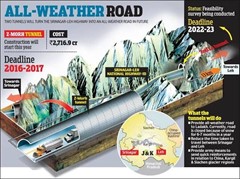
Source:
- Escape from snow: Set for early completion, 6.5-km Z-Morh tunnel to link Sonmarg, Srinagar all year
- Minister Reviews Construction Work of All-Weather Zojila, Z-Morh Tunnels on Srinagar-Leh Highway
Image Source
Inverted Duty Structure
- Context: A Group of Ministers (GoM) to review items under inverted duty structure to help minimise refund payout.
- Inverted duty structure refers to a condition where the tax rate on inputs used is higher than the tax rate on the outputs for sale.
- In the pre-GST regime, a situation of an inverted duty structure arose in cases where import duty on raw materials that were used in the production of finished goods was higher than the import duty on finished goods itself.
- Under GST Regime the Inverted Duty Structure refers to the cases where the rate of tax on inputs received are higher than the rate of tax on paid on outward Supplies.
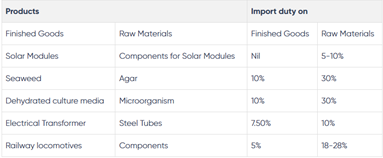
Sources:
- GST exemption items: Govt sets up ministerial panels to review tax slabs
- Inverted Duty Structure under GST
- Inverted Duty Structure the way forward?
Image Source:
Indian Antique Objects
- Context: 157 artefacts and antiquities will be brought to India from the USA, which were handed over to India by the US recently.
- The items handed over by the US include:
- The copper anthropomorphic object of 2000 BC or the terracotta vase from the 2nd CE.
- A 1.5-metre bas relief panel of Revanta (a Hindu deity) in sandstone made in the 10th CE
- An 8.5-cm Natraj figure from the 12th CE
- An 18th century sword in its sheath, with a Persian inscription mentioning Guru Hargobind Singh.
- Ornate figurines of Lakshmi Narayan, Buddha, Vishnu, Shiva Parvathi, the 24 Jain Tirthankaras etc.
- The other artefacts include a couple in samabhanga, and a female figure playing a drum.
- A painting by an anonymous artist, bearing a rubber stamp that identifies it as part of the personal collection of the Maharaja of Bikaner.
- While 71 artefacts are cultural, the others comprise figurines relating to Hinduism (60), Buddhism (16) and Jainism (9).

Sources:
- Dancing Ganesha, 900-yr-old Natraj among 157 smuggled antiques returned by US to PM Modi
- PM Modi to bring back 157 antiquities handed over by U.S.
Image Source:
How to grease the wheels of justice - TH
This article draws attention towards the India’s judicial system. More than 40% of cases are decided after three years in India, while in many other countries less than 1% of cases are decided after three years. The article suggests two measures can be taken to rectify the situation first being, fill in the vacancies in order to reduce pendency of cases and second is to increase the use of technology to improve the working.
If these little steps are taken, India’s judicial system can rank among the 10 top countries of the world and could make India the preferred nation for international investments and also fulfil the fundamental right to speedy justice of citizens.
Why you should read the article?
- To understand the state of Indian Judicial System
- To understand what steps can be taken to resolve the situation.
Source:
Seizing the semiconductor opportunity- HBL
Essence: The semiconductor industry is poised to more than double to over $1 trillion over the next decade. The current semiconductor shortage has further emphasized the economic importance of chip industry and an indication for India to act on this opportunity and secure its place. India has planned for building a semiconductor manufacturing facility aka FAB since 2006, but the initiative could not take off due to numerous factors such as half-hearted efforts, lack of vision & incentives and investments. India should bank on its strengths such as software leadership, young talent base and start-up ecosystem.
The global semiconductor chain is complex and interconnected. India should consider entering the chain in raw wafer manufacturing and assemble and packaging as these segments have relatively low barriers to entry and have a significant economic share within semiconductor industry. India should use its strength in software design and verification to get a stronghold in the Electronic Design and Automation software firms.
Why you should read this article?
- The article gives an insight about the need for India to create manufacturing units in semiconductor industry.
- The article points out the role of government initiatives needed to realise this goal.
Source:
From Tibetan resistance to international tensions, China’s obstacles in TAR- HT
Essence: The article talks about the growing tensions between China and Tibet Autonomous Region (TAR). The People’s Republic of China aims to achieve President Xi Jinping’s directive of “one people, one culture, one language, and one country”. Related to this there have been several top-level diplomatic visits from the Chinese Communist Party (CCP) to TAR to emphasise the importance of major of the 14th five-year plan and future long-range objectives of 2030.
A primary focus of CCP is to blend Han and Tibetan cultures which could avoid the situation of two Dalai Lamas. On the other hand, the confrontation between the USA and China is on increase because of the US withdrawal from Afghanistan which would now direct the USA’s attention to China. Tibet is also strategically important for India because of its geographic position because of the Indian public opinion which has begun to question India’s recognition of Tibet as part of China.
Why you should read this article?
- To understand China’s challenge to control the Tibet Autonomous Region.
- To understand global concerns for China associated with Tibet Autonomous Region.
Source:
Celebrating World Clean-up Day
Background
- Aimed at harnessing the power of togetherness in achieving environmental change, the World Clean-up Day is celebrated on the 18 Sep.
Celebration in Mumbai
- 2 day paper recycling drive: Youth of the community volunteered in collection of waste paper.
- Dawoodi Bohri community: came together in observing this day.
- Collection drive: was conducted to identify and collect wastepaper from homes, offices and schools.
- Online form: was shared with community members across 22 centres in the city to understand the supply chain of waste to be collected.
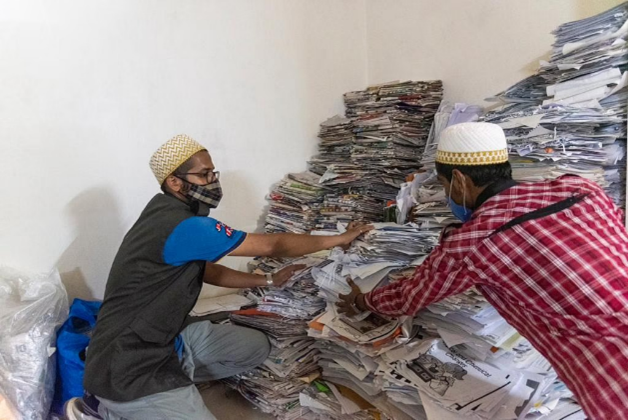
Learnings
- This initiative led to sustained efforts to create a lifestyle for community clean up drives in urban spaces.
Quote
“Never doubt that a small group of thoughtful, committed citizens can change the world”—Margaret Mead
Source:
Share the article
Get Latest Updates on Offers, Event dates, and free Mentorship sessions.

Get in touch with our Expert Academic Counsellors 👋
FAQs
UPSC Daily Current Affairs focuses on learning current events on a daily basis. An aspirant needs to study regular and updated information about current events, news, and relevant topics that are important for UPSC aspirants. It covers national and international affairs, government policies, socio-economic issues, science and technology advancements, and more.
UPSC Daily Current Affairs provides aspirants with a concise and comprehensive overview of the latest happenings and developments across various fields. It helps aspirants stay updated with current affairs and provides them with valuable insights and analysis, which are essential for answering questions in the UPSC examinations. It enhances their knowledge, analytical skills, and ability to connect current affairs with the UPSC syllabus.
UPSC Daily Current Affairs covers a wide range of topics, including politics, economics, science and technology, environment, social issues, governance, international relations, and more. It offers news summaries, in-depth analyses, editorials, opinion pieces, and relevant study materials. It also provides practice questions and quizzes to help aspirants test their understanding of current affairs.
Edukemy's UPSC Daily Current Affairs can be accessed through:
- UPSC Daily Current Affairs can be accessed through Current Affairs tab at the top of the Main Page of Edukemy.
- Edukemy Mobile app: The Daily Current Affairs can also be access through Edukemy Mobile App.
- Social media: Follow Edukemy’s official social media accounts or pages that provide UPSC Daily Current Affairs updates, including Facebook, Twitter, or Telegram channels.

